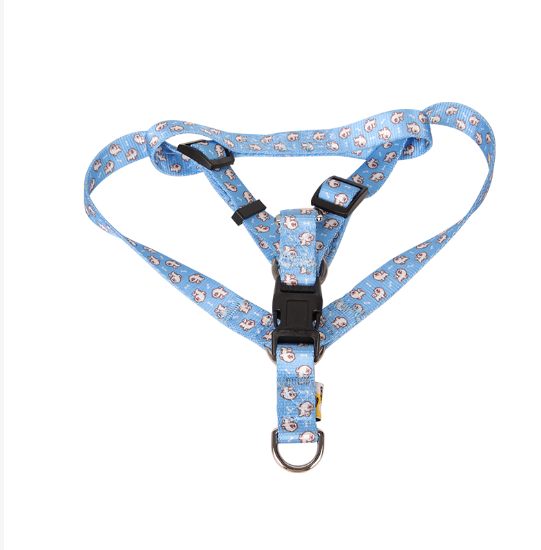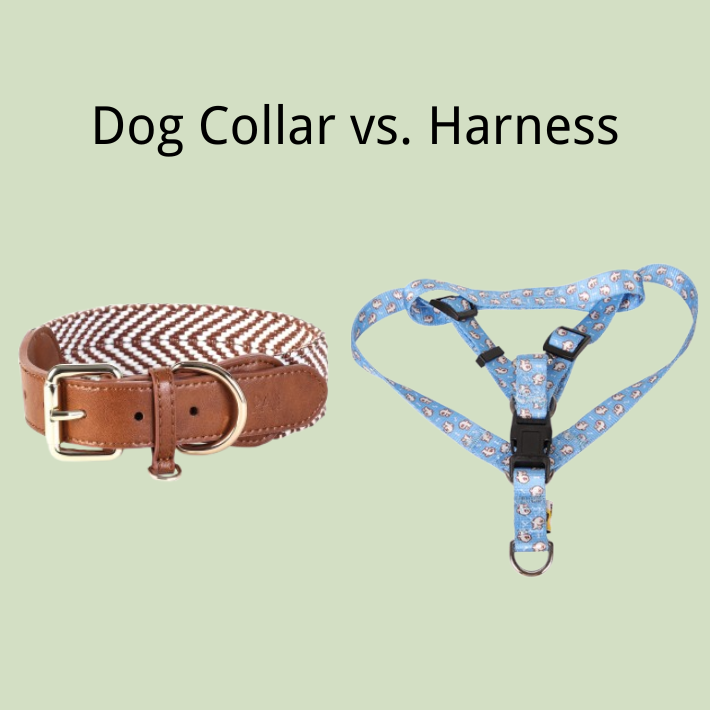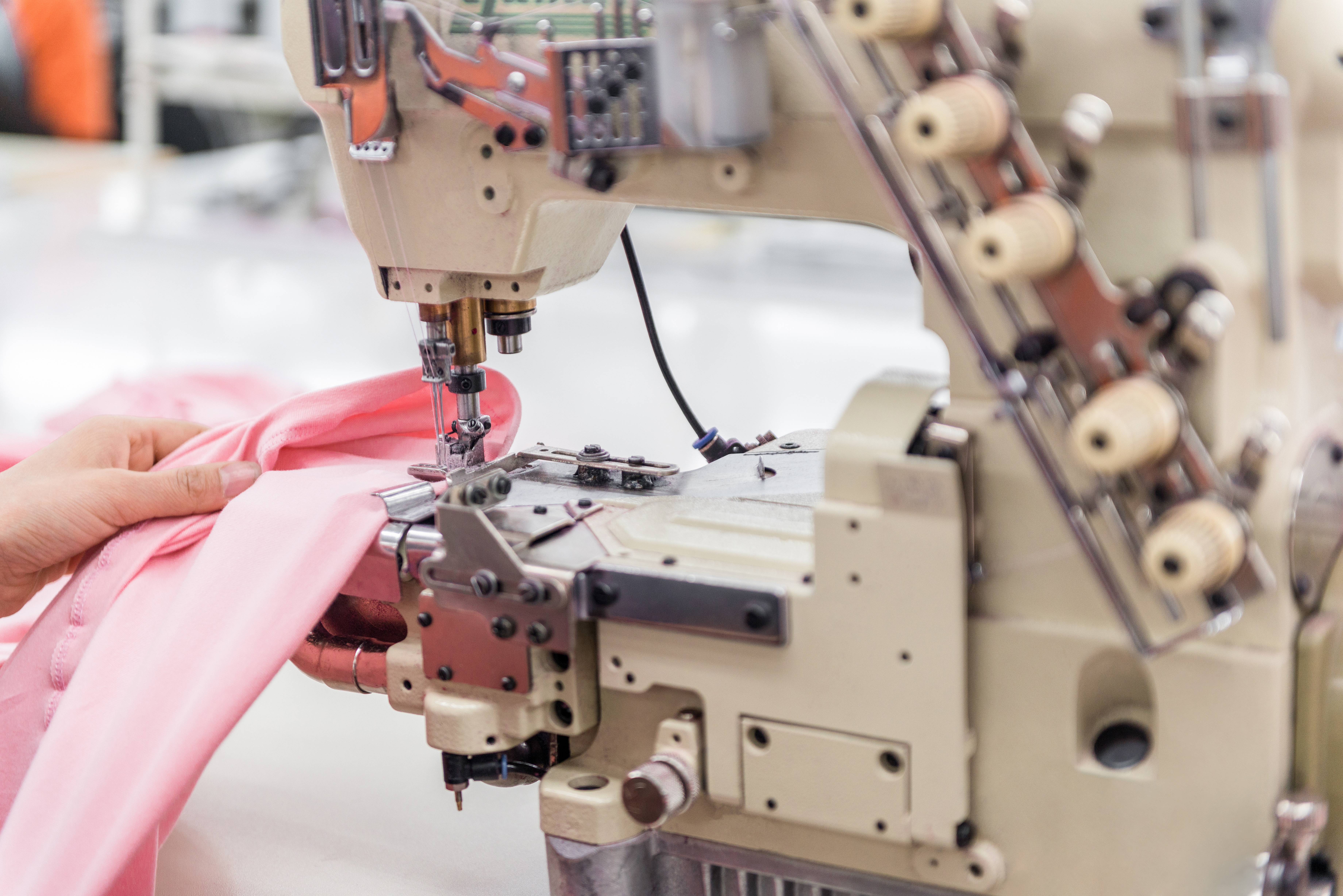Dog Collar vs. Harness: Which is Safer for Your Breed?
Explore the key differences between dog collars and harnesses, examine which is safer for specific breeds, and discuss the importance of custom dog collars and harnesses.
When it comes to walking and controlling our canine companions, pet owners are faced with a crucial decision: should you use a dog collar or a harness? Both dog collars and harnesses are widely used for controlling and guiding dogs, but they come with distinct benefits and limitations. Your choice will depend on various factors, such as your dog’s breed, size, temperament, and health conditions. Understanding the advantages and disadvantages of each option, as well as their suitability for different breeds, is essential in ensuring your dog’s safety and comfort.
In this blog, we will explore the key differences between dog collars and harnesses, examine which is safer for specific breeds, and discuss the importance of custom dog collars and harnesses. We’ll also look at manufacturers and wholesale options, with insights into well-known brands like Furnergy, which help to provide high-quality accessories for your pets.
Dog Collars: The Classic Option
Dog collars have been used for centuries, and they remain one of the most popular and convenient accessories for dogs. Traditionally, collars have been associated with identification and basic control during walks. However, while they offer numerous advantages, they also come with a set of potential safety concerns, especially when used improperly or on the wrong breed.
Advantages of Dog Collars
Convenience and Comfort: One of the main advantages of dog collars is their ease of use. Collars are quick to put on and take off, making them ideal for short trips outside or quick bathroom breaks. Unlike harnesses, collars don’t require much adjustment and are generally more lightweight, offering comfort for dogs who are not prone to pulling.
Additionally, dog collars are available in a variety of materials, from leather to nylon, making it easier to choose one that suits your dog's size and personality. They can be worn continuously without causing significant discomfort, making them an excellent option for identification purposes and brief outings.
ID Tags and Leashes: Dog collars are often used to hold essential identification tags, which can help reunite lost dogs with their owners. These tags typically feature the dog's name, your contact information, and sometimes even medical details, which are crucial in case of an emergency. Collars are also the most common method for attaching a leash, making them ideal for everyday walks, where quick attachment and detachment are necessary.
Training Tool: Dog collars are frequently used as training tools. Many dog trainers recommend slip collars or martingale collars, which give more control during training sessions. These collars are designed to tighten slightly when a dog pulls, which discourages unwanted behavior like leash pulling. When used correctly, collars can help reinforce obedience training and facilitate communication between the dog and its owner.
Drawbacks of Dog Collars
Pressure on the Neck: The primary disadvantage of using a dog collar, especially when pulling or tugging on the leash, is the pressure it places on the neck and throat. This pressure can lead to serious injuries, particularly in dogs with delicate neck structures. In breeds with a predisposition to tracheal collapse (such as small or toy breeds), collars can worsen the condition or cause respiratory distress.
Additionally, dogs who tend to pull on the leash may experience strain in the neck area, which could lead to painful injuries or even long-term damage. For dogs with respiratory issues, such as brachycephalic breeds like Bulldogs or Pugs, collars can increase the risk of choking or struggling to breathe.
Limited Control: While collars are easy to use, they provide limited control over a dog’s movements compared to harnesses. For dogs who are strong pullers or highly energetic, collars may not be the best option. The lack of pressure distribution means that collars focus on the neck, and pulling can result in a lack of control or discomfort for both the dog and owner.
Also, dogs with behavior issues like lunging or aggressive tendencies may be harder to control with just a collar, leading to unsafe situations during walks.
Not Suitable for Certain Breeds: Certain breeds are more susceptible to injury when wearing a collar. Small breeds like Chihuahuas, Dachshunds, and Yorkies have more fragile tracheas, and the pressure from a collar can cause irreversible damage over time. Similarly, some larger breeds, like Greyhounds, with narrow necks and deep chests, may also be at risk from using collars that don’t fit properly.
Custom Dog Collars
For pet owners who want a more personalized touch, custom dog collars are an excellent option. These collars allow you to select specific colors, patterns, and materials that best reflect your dog's unique style. You can even have your dog’s name, emergency contact information, or a special design embroidered onto the collar, which can help with identification in case of an emergency.
Some dog collar manufacturers offer custom collars with additional features such as reflective strips, padding, or adjustable buckles to ensure maximum comfort and functionality. Custom collars also come in a variety of sizes, so you can find the perfect fit for your dog, whether they are a tiny puppy or a large breed.

Harness: The Safer Option for Many Breeds
A harness is an increasingly popular alternative to dog collars, particularly for dogs that may be prone to pulling, respiratory issues, or neck injuries. Harnesses provide a more even distribution of pressure across a dog’s body, especially the chest and shoulders, rather than focusing the force on the neck.
Advantages of Harnesses
Better Control and Comfort: Harnesses are designed to provide more control over a dog’s movements. By distributing the pressure over a larger area of the dog’s body, harnesses reduce the risk of injury and discomfort. Dogs that tend to pull will benefit from the control a harness offers, as it discourages pulling and helps the dog learn to walk more calmly.
A well-fitted harness allows you to guide your dog with ease, making walks more comfortable for both of you. The added control makes it easier to correct behavior and ensure the safety of both the dog and the owner during outings.
Reduced Risk of Injury: Unlike collars, which concentrate pressure on the neck, a harness prevents injuries to the throat and trachea. This makes harnesses an ideal option for dogs with breathing issues, such as brachycephalic breeds like Pugs, Bulldogs, and Shih Tzus, who may struggle with regular collars. A harness avoids direct pressure on the airway and reduces the chances of respiratory distress.
Furthermore, using a harness can prevent harm to dogs who tend to pull aggressively. The harness absorbs the force of their movements and helps prevent strain on the neck, spine, or other sensitive areas.
No Choking Hazard: Harnesses eliminate the choking risk that is inherent with collars, particularly during high-energy walks or if the dog pulls on the leash. Since the pressure is spread evenly across the body, the dog will not experience choking, even if they lunge or pull hard.
Drawbacks of Harnesses
Learning Curve: While many dogs quickly adapt to wearing a harness, others may find it uncomfortable or restrictive at first. It may take some time for your dog to get used to the harness, especially if they’ve been accustomed to wearing a collar for a long time. Training and patience are key to helping your dog adjust to the new accessory.
Less Convenient for Quick Trips: Harnesses are more secure and offer better control, but they can be less convenient when you’re simply taking your dog outside for a short bathroom break. Putting on a harness can take a bit more time compared to a collar, making it less ideal for quick outings. However, for longer walks and outdoor adventures, the benefits of a harness far outweigh this minor inconvenience.
Custom Harnesses
Much like custom dog collars, custom harnesses allow for a personalized fit and style. Many pet accessory brands offer tailored options, where you can choose the color, size, and design to suit your dog’s unique preferences. Custom harnesses are often padded for extra comfort and are available with adjustable straps to ensure a snug and secure fit.
When considering a custom harness, ensure you choose a reputable manufacturer who specializes in creating harnesses with both comfort and safety in mind. Customization options can include adding reflective strips for visibility, names for identification, or even specific designs to match your dog’s personality.

Which is Safer for Your Breed?
When deciding between a dog collar and a harness, it is essential to take into account your dog’s breed, size, behavior, and any special needs they may have. Some dogs are more suited to wearing a collar, while others will benefit from the additional support and safety of a harness. Let’s break down which option is safer for different types of dogs:
- Small and Toy Breeds: Small breeds like Chihuahuas, Dachshunds, and Yorkshire Terriers, often have more delicate necks and tracheas. Collars can put too much pressure on these areas, causing pain or injury. For these breeds, a harness is the safest choice, as it avoids pressure on the neck and helps distribute the force across the chest.
- Large and Strong Breeds: Larger breeds, such as Golden Retrievers, German Shepherds, and Labradors, can be difficult to control with just a collar, especially if they tend to pull on the leash. Harnesses provide better control by distributing the force of their movements across the chest and shoulders, making it easier for the owner to manage their strength.
- Brachycephalic Breeds: Dogs with short noses, such as Bulldogs, Pugs, and Boxers, should always wear a harness instead of a collar. These breeds have respiratory issues that can be exacerbated by the pressure from a collar, making a harness the safer option for their breathing and overall comfort.
- Energetic and Active Dogs: High-energy dogs, such as Border Collies, Huskies, and Australian Shepherds, require a harness for better control during walks. These breeds tend to pull or run quickly, and the harness helps to prevent injury from the intense force that may be placed on the neck with a collar.
The Role of Dog Collar and Harness Manufacturers
The pet accessory market has grown significantly, and there are now numerous options available from dog collar manufacturers and harness manufacturers. Companies like Furnergy have gained recognition for providing high-quality pet products that focus on safety, comfort, and durability. Whether you’re purchasing a standard collar or a custom harness, selecting a reputable brand is essential to ensure the best fit and highest quality for your pet.
Harness Wholesale
For those in the pet retail business or looking to buy accessories in bulk, harness wholesale offers the chance to purchase high-quality products at a lower cost. This option is ideal for pet store owners who need to stock various sizes and styles of harnesses to meet the needs of different breeds. Wholesale options often include discounted prices for bulk purchases, making it easier for retailers to offer affordable products to their customers.
Conclusion: Which is Right for Your Dog?
The decision between using a dog collar or a harness largely depends on your dog’s breed, health, and behavior. Collars are ideal for identification purposes and for dogs who do not pull excessively, but they may not be the safest option for all breeds. Harnesses, on the other hand, offer superior control and comfort, especially for dogs prone to pulling or those with respiratory concerns. Custom collars and harnesses from reputable manufacturers can provide additional style and functionality, ensuring your pet’s needs are met.
Choosing the right accessory for your dog is essential for their safety, comfort, and overall well-being. By considering your dog’s individual needs and selecting products from trusted manufacturers like Furnergy, you can make the best choice for your furry friend and ensure enjoyable and safe walks for years to come.








